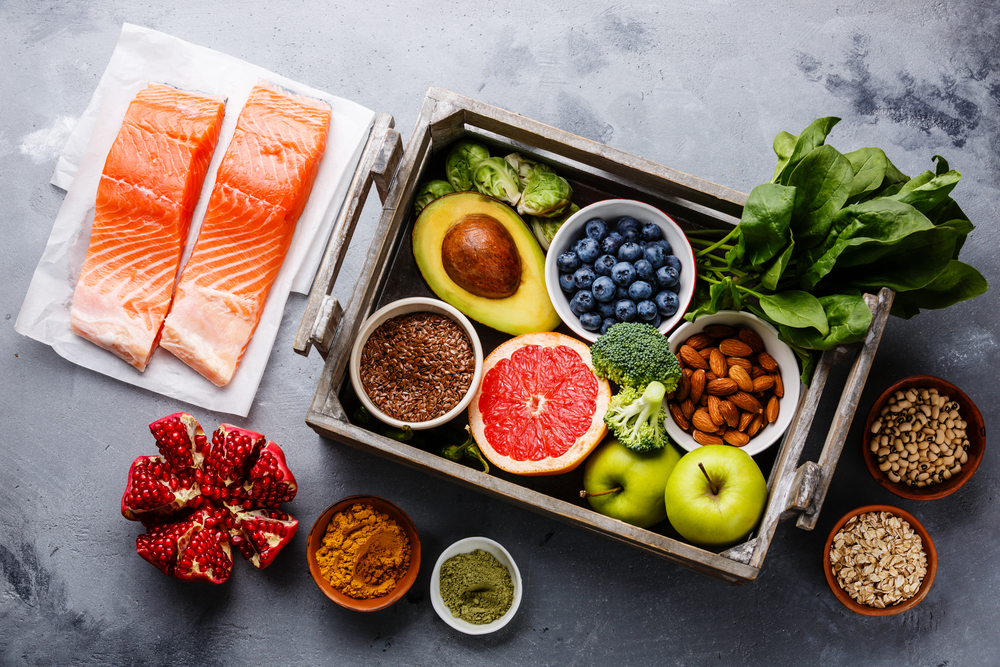Reducing chronic inflammation is a universally beneficial step towards improving overall health. This physiological process lies at the core of numerous health concerns, ranging from stiff joints to autoimmune disorders like ulcerative colitis and lupus. Surprisingly, even conditions like heart disease and mental health challenges have been correlated with heightened systemic inflammation. Factors such as stress, environmental pollutants, unhealthy dietary habits, sleep deprivation, and various facets of modern life all contribute to consistently elevated levels of internal irritation. Fortunately, there is a solution – the consumption of foods rich in antioxidants.
In the battle against inflammation, we are not powerless, and incorporating the right foods plays a crucial role in quelling this internal fire. Research has demonstrated that these compounds, derived from our diets, effectively cleanse our cells of harmful free radicals, which are highly reactive and unstable atoms known to incite inflammation.
Identifying antioxidant-rich foods can be as simple as recognizing vibrant colors, such as the intense red of tomatoes, the deep purple of grapes, or the lush green of leafy vegetables. Some studies suggest that the more vivid the color, the higher the antioxidant content in these natural foods. You can start by looking for colorful options or refer to this list of seven top antioxidant-rich foods to combat inflammation.
1) Wild blueberries
Berries, in general, are abundant sources of antioxidants, making options like strawberries, raspberries, blackberries, and others excellent choices. However, when it comes to combating inflammation, blueberries stand out as a particularly valuable selection. What sets them apart are the anthocyanin compounds responsible for their striking purple-blue hue, which have been associated with preventing chronic health conditions such as cardiovascular disease, cancer, and diabetes.
For those looking to supercharge their antioxidant intake, consider going wild! Research suggests that wild blueberries pack three to five times more antioxidants than their regular counterparts. To put it into perspective, consuming one cup of wild blueberries provides a staggering 13,427 total antioxidants, surpassing the USDA’s recommended intake by roughly tenfold, as reported by the University of Arkansas Division of Agriculture Research and Extension.
2) Tomatoes
Whether you slice them, sauce them, or sauté them, tomatoes come packed with a wealth of antioxidants. These vibrant red entities, often referred to as fruits or vegetables, depending on one’s perspective, are teeming with various compounds that combat harmful free radicals. Among these beneficial components are lycopene, vitamin C, beta-carotene, and an array of flavonoids.
Lycopene, in particular, has garnered attention for its potential role as an anti-cancer agent. A comprehensive research review conducted in 2022 affirmed that most investigations into the relationship between lycopene and cancer have yielded encouraging findings, with a particular focus on its potential to prevent prostate cancer.
3) Green tea
Having explored the benefits of blue and red, let’s turn our attention to green. Green tea emerges as a superb reservoir of antioxidants, offering remarkable health advantages whether enjoyed hot or iced. Within green tea, a group of antioxidants known as catechins takes the spotlight, and they have been associated with anti-cancer and anti-inflammatory properties, as revealed by a study conducted in 2017.
4) Oranges
Embrace the vibrant orange hue to combat free radicals effectively. As you may already be aware, citrus fruits are abundant sources of vitamin C. What might surprise you, however, is that this commonplace vitamin possesses formidable antioxidant properties and could potentially contribute to reducing the risk of cardiovascular disease, vascular dysfunction, stroke, and certain types of cancer. Whether you start your day with a refreshing glass of orange juice or enhance your salads with succulent orange slices, you’re fortifying your arsenal of antioxidants.
5) Spinach
Spinach is renowned for its nutritional content, encompassing essential elements such as iron and vitamin K, but its nutritional value extends beyond these well-known components. Within these leafy greens, a diverse range of antioxidants is found, including kaempferol, quercetin, lutein, and zeaxanthin. Among these antioxidants, lutein and zeaxanthin are linked to enhanced vision and eye health, kaempferol may contribute to cancer prevention, and quercetin is frequently acknowledged for its potential to promote heart health.

